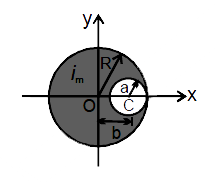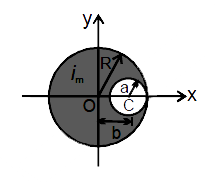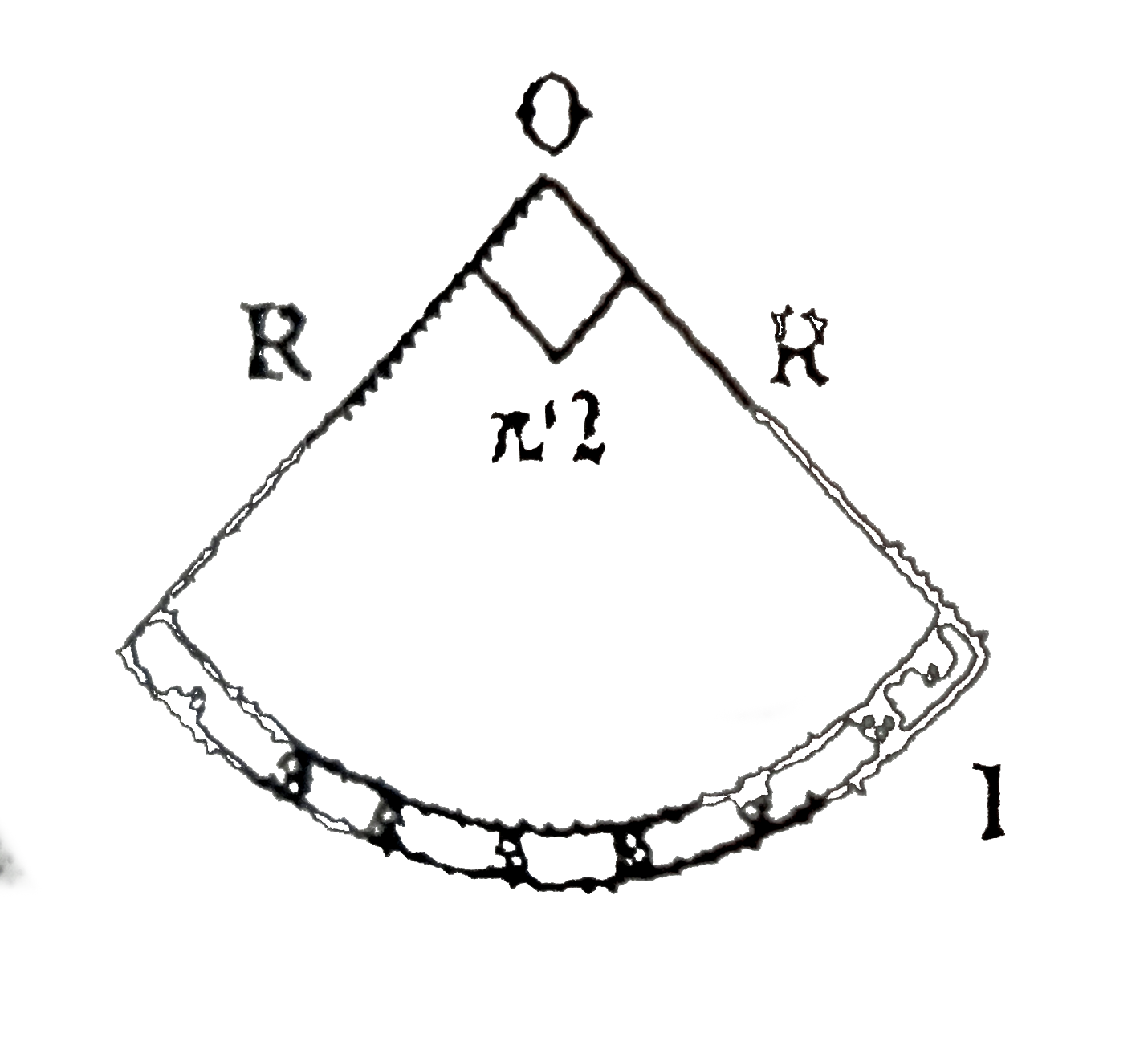Inside a long staight unifrom wire of round cross-section there is a long round cylindrical cavity whose axis is parallel to the axis of the wire and displaced from the latter by a distance 1. A direct current of density j flows along the wire. Find the magnedtic induction inside the cavity. Consider, in particular , the case l=0.
We can think of the given current which will be assumed uniform, as arsining due to a negative current, flowing in the cavity, superimposed on the true current, everywhere including the cavity. Then from the problem by superposition.
→B=12μ0→j×(A→P−B→P)=12μ0→j×→l
if →l vanishes so that the cavity is concentric with the conductor, there is no magnetic field in the cavity.

Topper's Solved these Questions
- BOOK - IE IRODOV, LA SENA & SS KROTOVCHAPTER - ELECTRODYNAMICSEXERCISE - Electromagnetic Induction84videos
ELECTRODYNAMICS
- BOOK - IE IRODOV, LA SENA & SS KROTOVCHAPTER - ELECTRODYNAMICSEXERCISE - Motion Of Charged Particle In Magnetic Field36videos
ELECTRODYNAMICS
- BOOK - IE IRODOV, LA SENA & SS KROTOVCHAPTER - ELECTRODYNAMICSEXERCISE - Electric Current72videos
ELECTRODYNAMICS
- BOOK - IE IRODOV, LA SENA & SS KROTOVCHAPTER - ELECTRICITY AND MAGNETISMEXERCISE - All Questions6videos
ELECTRICITY AND MAGNETISM
- BOOK - IE IRODOV, LA SENA & SS KROTOVCHAPTER - ELECTROMAGNETISMEXERCISE - All Questions24videos
ELECTROMAGNETISM
Similar Questions
Inside a long straight uniform wire of round cross-section, there is a long round cylindrical cavity whose axis is parallel to the axis of the wire and displaced from the latter by a distance l. A direct current of density j flows along the wire. Find the magnetic induction inside the cavity. Consider, in particular, the case l=0.
 View Solution
View SolutionA very long straight conductor has a circular cross- section of radius R and carries a current density J. Inside the conductor there is a cylindrical hole of radius a whose axis is parallel to the axis of the conductor and a distance b from it. Let the z-axis be the axis of the conductor, and let the axis of the hole be at x = b. Find the magnetic field

on the y = axis at y = 2R.View Solution
Knowledge Check
- Question 1 - Select One
A long straight wire of circular cross- section carries a current along its length. On the axis inside the wire, it follows that
Astrength of electric and magnetic fields are zeroBstrength of electric field is zero but magnetic field is non− zeroCstrength of electric and magnetic field non−zeroDstrength of electric field is non−zero but magnetic field is zero. - Question 2 - Select One
A constant direct current of uniform density ˆj is flowing in an infinitely long cylindrical conductor.The conductor contains an infinitely long cylindrical cavity whose axis is parallel to that of the conductor and is a a distance →l from it.What will be the magnetic induction →B at a point inside the cavity at a distance →r from the centre of cavity?
Aμ0(→j×→r)2Bμ0(→j×→l)2Cμ0(→j×→l)+μ0(→j×→r)2Dμ0(→j×→l)−μ0(→j×→r)2 - Question 3 - Select One
Inside a uniform sphere of density ρ there is a spherical cavity whose centre is at a distance l from the centre of the sphere. Find the strength of the gravitational field inside the cavity.
AE=−23πGρlBE=−43πGρlCE=−43π2GρlDE=−43πGρ2l2
A very long straight conductor has a circular cross- section of radius R and carries a current density J. Inside the conductor there is a cylindrical hole of radius a whose axis is parallel to the axis of the conductor and a distance b from it. Let the z-axis be the axis of the conductor, and let the axis of the hole be at x = b. Find the magnetic field

on the x=axis at x = 2RView SolutionN=2.5.103 wire turns are uniformly wound on a woodern toroidal core of very smalll cross-section. A current I flows through the wire. Find the magentic induction inside the core to that at the centre of the toroid.
View SolutionInside a uniform sphere of density ρ there is a spherical cavity whose centre is at a distance l from the centre of the sphere. Find the strength G of the gravitational field inside the cavity.
View SolutionA current I flows in a long straight wire (into the plane of the paper) with cross-section having the from of a circular are of radius R a shown in the figure. Find the magnetic induction at the point O.
 View Solution
View SolutionA current of 2 amp. flows in a long, straight wire of radius 2mm. The intensity of magnetic field on the axis of the wire is
View Solution

